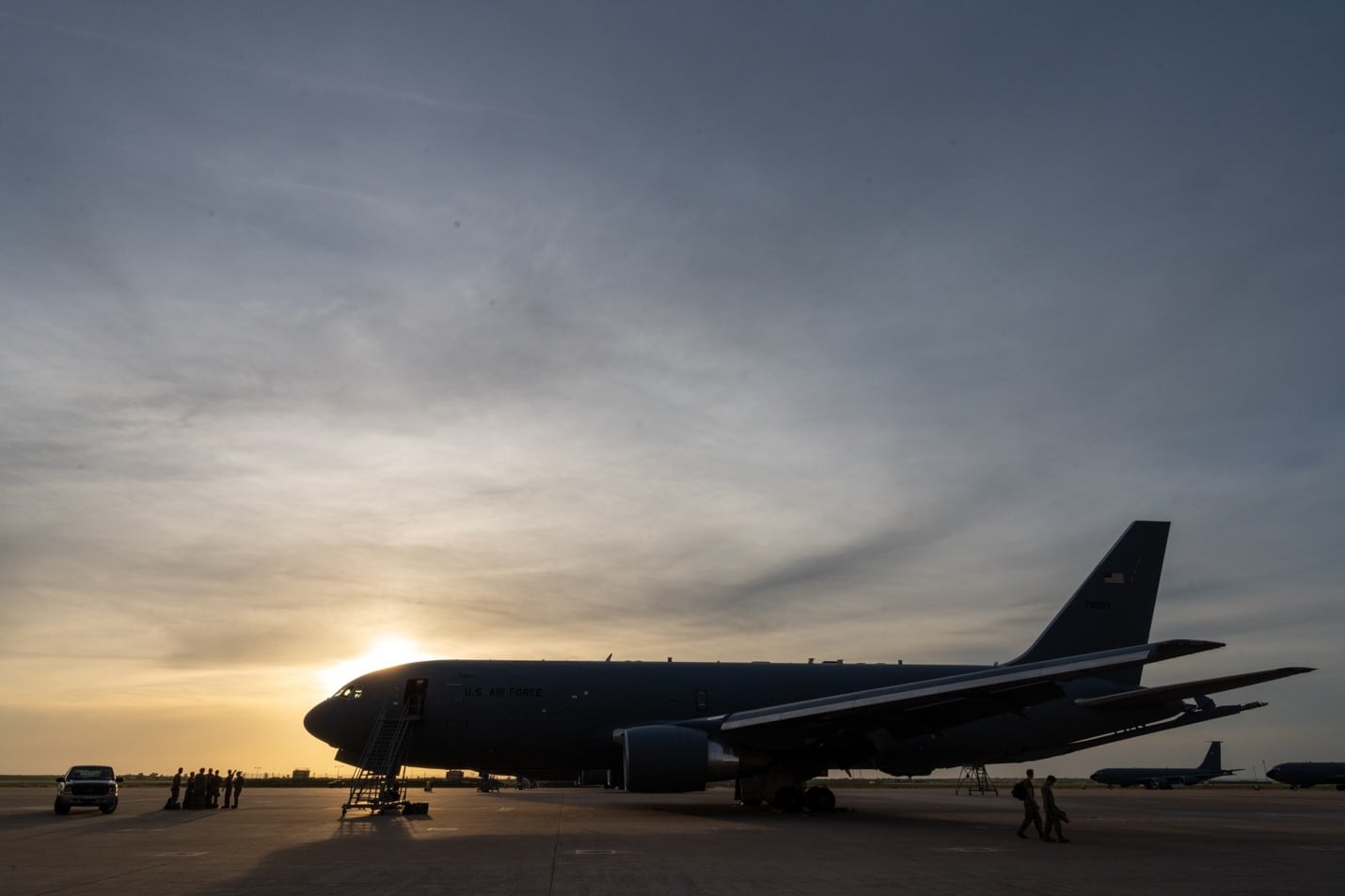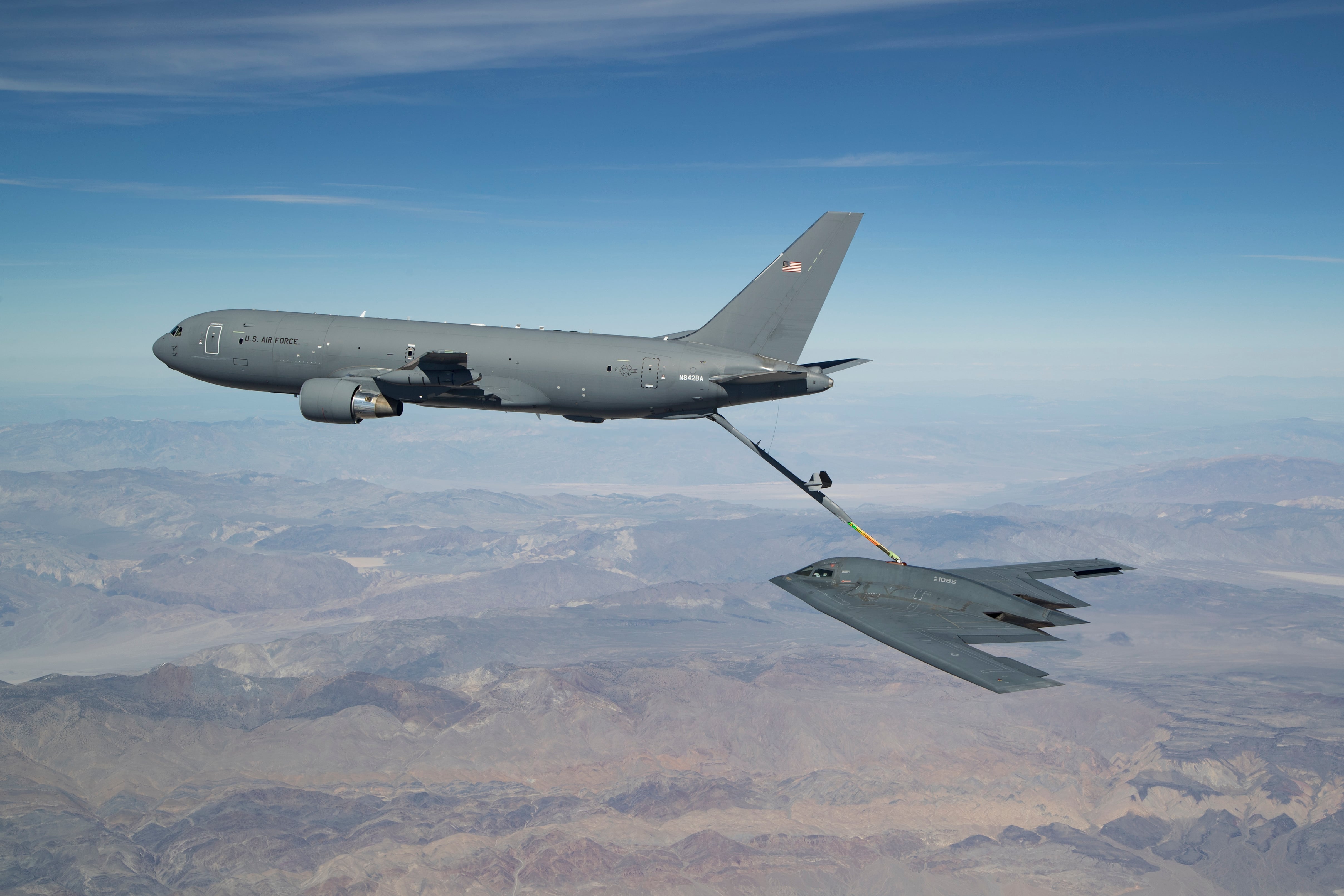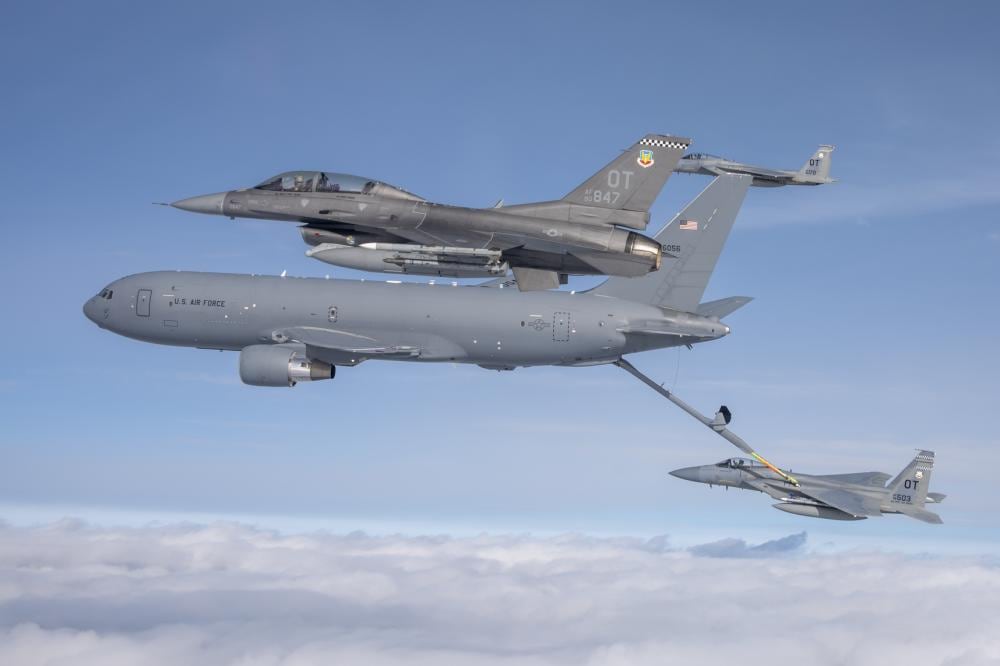The Air Force is moving forward with experiments to test whether a two-person crew could safely fly a KC-46 Pegasus tanker in an emergency.
A solo pilot and a fuel boom operator with the 22nd Air Refueling Wing at McConnell Air Force Base, Kansas, on Oct. 25 took to the skies for two KC-46 sorties on a military test range, the service said Oct. 28.
Flying tankers without copilots is one idea Air Mobility Command is trying out as it considers the tactics it may need in a possible military conflict with China. The Air Force has stressed that approach would not be the norm.
RELATED

Launching missions with a skeleton crew could lessen the number of potential American casualties in case of attack, or make the crew more nimble in a crisis. Multiple small crews could swap out in shifts during around-the-clock sorties, another concept the Air Force is fleshing out..
During the flight test, the McConnell airmen completed a simple flight path before adding in refueling tasks, the Air Force said.
“The boom operator was co-located in the cockpit with the pilot, except when performing boom operations, and a second instructor pilot was on board throughout the entire mission to serve as a safety observer,” the Air Force said.
Air Mobility Command called the test successful but did not immediately answer what the boom operator was allowed to do in the cockpit. The service has suggested additional training so airmen can learn the basics of other crew positions.
RELATED

The Air Force has “thoroughly” considered the risks of removing a tanker’s copilot and how to minimize potential problems, wing commander Col. Nate Vogel said.
“This mission was practiced extensively in flight simulators,” he said in the release. “Each phase of evaluation has been carefully considered, taking into account crew safety, aircraft capabilities and existing federal aviation standards.”
But the idea has raised eyebrows among military watchers who question its motives and safety, particularly as the Air Force’s new aerial refueling platform continues to struggle with major design flaws. The service has refuted claims that its enduring pilot shortage is what’s driving the concept.
The KC-46 is cleared to refuel most U.S. military aircraft. It recently received the go-ahead to participate in everyday missions worldwide despite lingering hardware and software woes.
RELATED

The Air Force plans to buy at least 179 KC-46 airframes under a $4.9 billion contract. Boeing must spend nearly $7 billion of its own money on required improvements to the plane.
The Pegasus is intended to be a more versatile, resilient tanker than earlier designs and carry up to 65,000 pounds of cargo. Officials expect it will be only provisionally functional until around 2025 or so, when design fixes are available.
In the meantime, Air Mobility Command boss Gen. Mike Minihan is pushing hard to convince others that despite its remaining problems, the KC-46 is ready for prime time.
“Nobody’s going to care about my plans for the KC-46 or my fleet in 10 years if I lose tomorrow. I need it now,” he told reporters in September. “I am extremely straightforward with Boeing in my concerns about quality, timelines and cost. But if I can put an incredibly capable tanker in the fight, then why wouldn’t I?”
Rachel Cohen is the editor of Air Force Times. She joined the publication as its senior reporter in March 2021. Her work has appeared in the Washington Post, the Frederick News-Post (Md.), Air and Space Forces Magazine, Inside Defense, Inside Health Policy and elsewhere.








